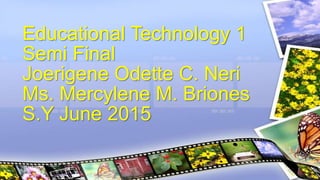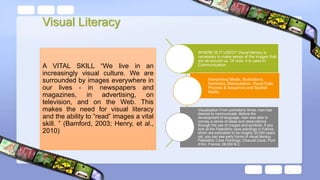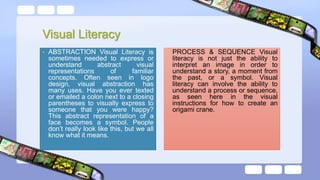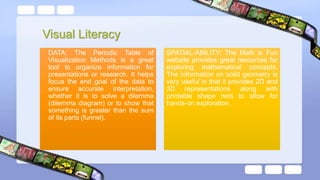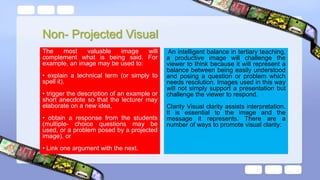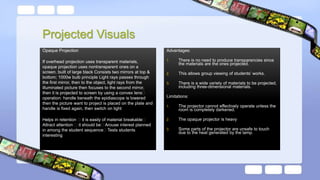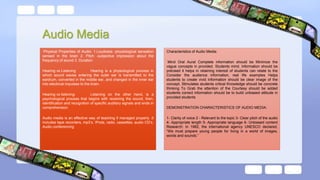Visual literacy relates to interpreting and creating meaning from graphics and symbols across various disciplines like visual arts, communication, and education. It involves understanding visual representations like illustrations, photos, signs, and diagrams. Visual literacy skills are important for interpreting media, data visualization, and navigating an increasingly visual world. It can be developed by having students analyze images, think critically about visual design elements, and learn to "read" different types of visual formats.
